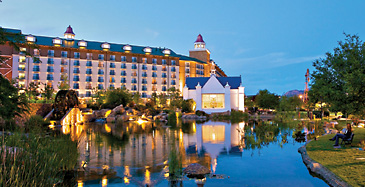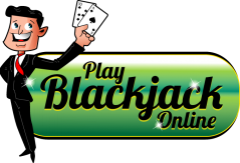1. The name ‘Blackjack’ was coined by American casinos. Originally, if you drew the Ace of Spades along with either the Jack of Spades or the Jack of Clubs, this was referred to as a ‘Blackjack’, and entitled you to a payout of 10 to 1. The offer was dropped once it had drawn in considerable crowds, but the name remains
2. French players often refer to Blackjack as Vingt-et-un. A Spanish version, Ventiuna, is referred to as early as 1602, in a book by Miguel de Cervantes (most famous for Don Quixote).
3. The ‘shoe’ that is used to store cards in baccarat originated in Cuba in the 1950s. Many of the Cuban dealers were very poor, and casino owners suspected they were susceptible to cheating – particularly through slipping players a lucky card or two in return for a generous tip. The ‘shoe’ was devised so that cards would be hidden inside. Combined with an increase in the number of decks to four, this helped eliminate dealer cheating, and led to a significant increase in house takings.
4. The year 2000 saw the launch of the first Continuous Shuffling Machine (CSM). Known as ‘The King’, devices like this one became widespread as casino bosses looked to repel card counters. They also remove the need for dealers to waste time shuffling cards, increasing the rate at which hands are played by as much as 40%.
5. New cards often aren’t truly random. The 10-point cards will be grouped together in each pack, and one shuffle isn’t enough to completely break up this arrangement. Only with at least two shuffles will the cards be randomly distributed.
6. Discarded cards are placed in a translucent red tray. Combined with special tinted glasses, this makes it easier for dealers and security teams to spot cards that have been daubed with inks or daubs.
7. Blackjack has its own hall of fame, at the Barona Casino in San Diego, California. None of the members of this esteemed club are allowed to play at the casino there. They do get free food and drinks for life, though!

8. The game has frequently been banned. It became popular in the USA only after being banned in France during the French Revolution. It was then banned in the USA in the 19th century, and only became legal again in the 1930s.
9. Blackjack is famous for its incredible low edge – 0.5%, with some players claiming this can be brought down to almost 0.4% – making it the most player-friendly casino game. But don’t be deceived by this figure, as you need a really developed style of play to achieve this low percentage – for most players, the house edge will be very much wider.
10. Getting a blackjack should pay you 3:2. This is an important part of eroding the house edge, so make sure the game isn’t fobbing you off with 1:1 blackjack payouts.
11. The more decks there are, the higher the house edge becomes. That rule can be deceptive though. Some casinos are starting to offer a variant called Single Deck 6:5 Blackjack. This lures players in with the promise of only having one deck to handle, but it compensates with poor payouts that result in the house edge rising to 1.6% or more.
12. The dealer goes last. This is a critical advantage that accounts for the dealer winning 48% of the time, while a player will win only 44% of the time.
13. The average hand for the dealer is just above 18. It pays, therefore, to be a little aggressive and to try and get a score in excess of this.
14. Mathematically, 16 is the worst hand in the game. Those hands with lower scores have a smaller chance of making you go bust, while those hands with higher scores have a greater chance of winning outright.
15. It’s unsurprising that 21 is the best hand, followed by 20. Less predictable, though, is that the third best hand is not 19, but 11. That’s because you can hit once without running the risk of going bust, but still have a very good chance of making up an extremely strong hand. With one more card, you have a 46.2% chance of getting 19 or more, and a 30.8% chance of securing an unassailable 21.
16. When the dealer has between a 2 and a 6, there’s a 35-42% chance that they’ll go bust trying to set a good score. This figure falls to just 23-26% for cards between 7 and 10, and to a mere 17% when the dealer has an ace.
17. Check the rules very carefully. Look for games where the dealer must always stand on 17. Some casinos allow dealers to hit if they have a soft 17 (A6, for instance). This gives the casino more of an edge, so steer clear of those games. Ensure you know the minimum and maximum bids.
18. Blackjack’s suitability for card counting has made it much loved with those trying to defeat the house edge. Card counting means that you assign values to different cards. By looking at which cards are being turned up, and doing some running calculations in your head, you can get an idea of whether there are lots of high cards or lots of low cards left. At certain times, this knowledge gives you a significant advantage, allowing you to reverse the 0.5% house edge. There are lots of card counting techniques, but the easiest revolve around assigning cards values of -1, 0, or +1. Most of the successful card counters work in teams, allowing them to avoid detection for longer. The edge gained by the best teams is said to be in the range of 2-4%.
19. Edward O Thorp turned the gambling world on its head in 1962 with the publication of Beat the Dealer. This work showed that you could overturn the odds and beat the game, with skill. It would inspire the legendary Lawrence Revere to create his own card counting strategies, and these proved so effective that Thorp returned the favour by insisting on Revere’s techniques being featured in the subsequent reprint of Beat the Dealer. Thorp has since gone on to be a very successful hedge fund manager.
20. Al Francesco digested the card counting techniques of Thorp and Revere, but became disillusioned after getting barred from casino after casino. It was then that he came up with the concept of team play, putting together seven-strong teams where six players would operate as ‘counters’, sending a signal to the ‘Big Player’ when a particular table seemed to have a particularly significant number of high or low cards left. He and his team were highly successful for six years, until Ken Uston’s 1977 bestseller, The Big Player, unveiled all their secrets. Subsequent big name card counting teams all followed the basic rules set down by Francesco.
21. Perhaps the most famous card counting team, the MIT Blackjack Team, consisted of students from the Massachusetts Institute of Technology. Initially unsuccessful, the team was transformed after Bill Kaplan joined – he was invited to come along after a chance encounter in a restaurant, when one of the members happened to overhear Kaplan telling a friend about his years of card counting. Kaplan introduced new discipline and rigour, and eliminated the numerous errrors that had plagued the team to that point. They would go on to be hugely successful, taking considerable sums over the course of the 1980s.
22. Card counting isn’t illegal, but British casinos reserve the right to refuse to let you play. Trespassing on Private Property is always available if you’re unwanted.
23. Casinos now use multiple decks and regular shuffles (often with the help of an automatic device), so card counting is almost impossible. Many online games also seem to preclude it, with their use of Random Number Generators in place of real cards. It’s possible that the emergence of Live Dealer games could bring back card counting, although it seems hard to believe casinos won’t thwart these ambitions with more decks and more shuffling.
24. The seats around the dealer are called bases. The one nearest to the dealer is First Base, and the one furthest away is Third Base. Third Base gives card counters the best chances of success.
25. In general play, stand on low hands of 12/13, if the dealer has a 6 or lower – they’ll probably go bust trying to chase your score. If the dealer has 7 or more, they have improved chances of winning, so you need to be aggressive yourself. This is particularly true if the dealer has an Ace or a card with a value of 10.
26. You need to take advantage of the double down option, but only when the odds are in your favour. Use it only when the dealer has a 6 or lower, and you either have A6 or A7, or your hand is worth between 9 and 11. If you have an 11, you can allow the dealer to have as much as 8.
27. Splitting should also be utilised. Always split 7s, 8s and Aces. 2s up to 6s are low enough that you should be looking to draw again rather than split, while 9-10 will be good enough as they are to win.
28. Always turn down Insurance. The odds simply don’t pay out over time, as you’re effectively breaking even on a 30.8% chance.
29. Don’t bother with side bets. These are there to give a significant edge to the house.
30. There are some great apps that allow you to perfect and fine-tune your basic play. Try Blackjack MH (Apple) or BlackJack 21 (Android).
